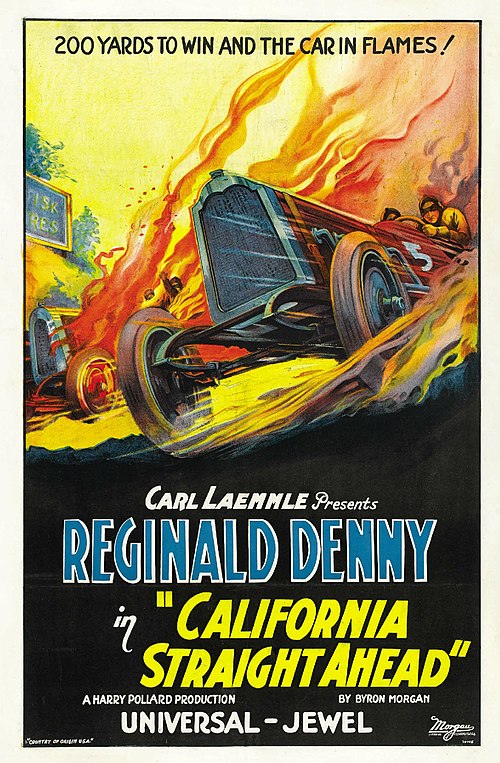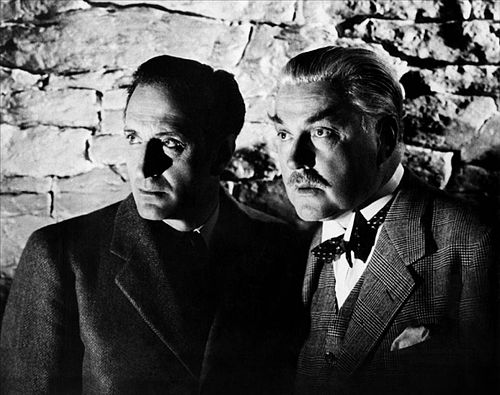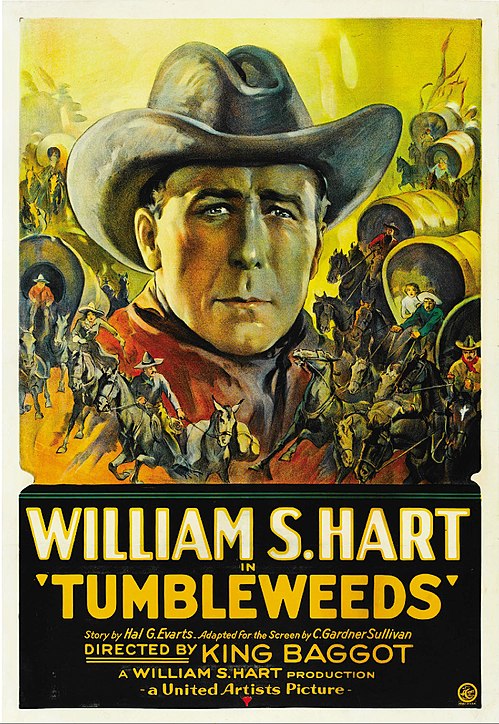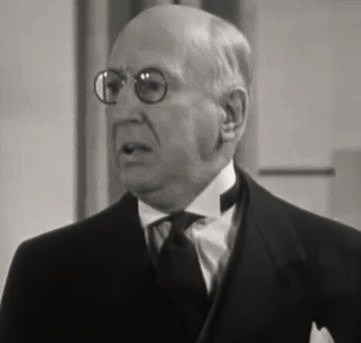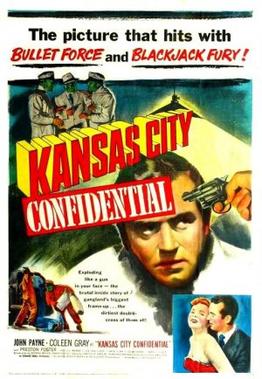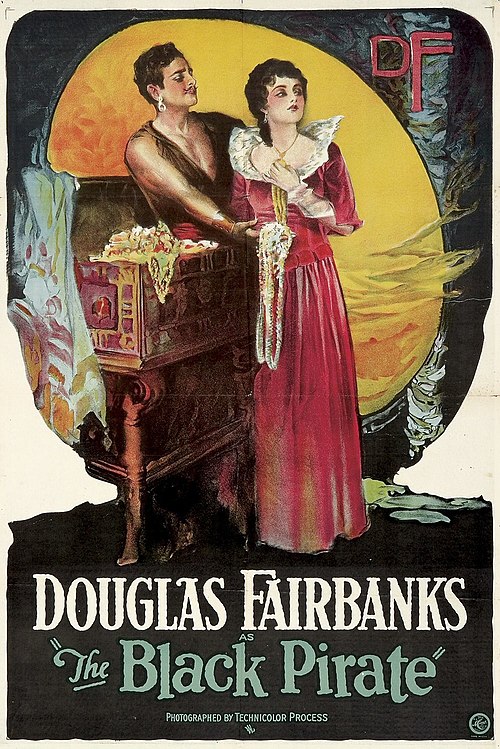Advertisement
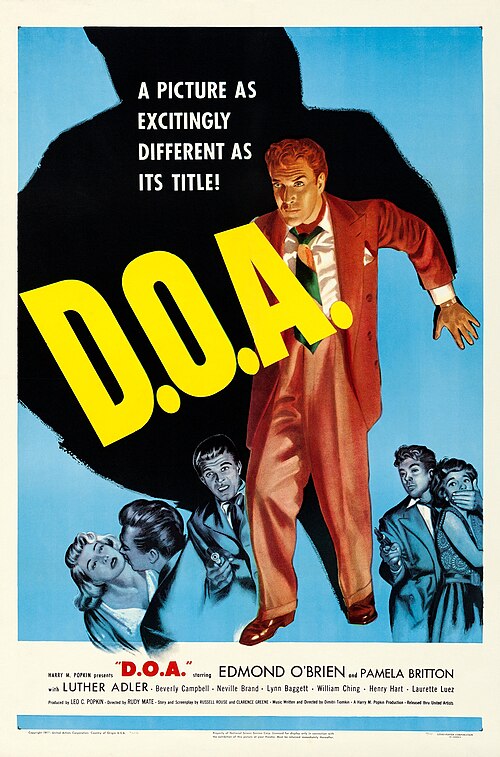
Image source: Wikimedia Foundation (wikimedia.org)
Download Movie [Video Format: MP4]
Movie Source: Internet Archive (archive.org)
Advertisement
Advertisement
Other Versions of this Movie
D.O.A.
1949
D.O.A. (1950) is a film noir drama film directed by Rudolph Maté, considered a classic of the stylistic genre. The frantically-paced plot revolves around a doomed man's quest to find out who has poisoned him – and why – before he dies. The film begins with a scene called "perhaps one of cinema's most innovative opening sequences" by a BBC reviewer. The scene is a long, behind-the-back tracking sequence featuring Frank Bigelow (O'Brien) walking through a hallway into a police station to report a murder: his own. Disconcertingly, the police almost seem to have been expecting him and already know who he is.
D.O.A., a film noir drama film directed by Rudolph Maté, is considered a classic of the genre. The frantically paced plot revolves around a doomed man's quest to find out who has poisoned him, and why.< name=imdb>.</> This film marks the debuts of Beverly Garland (as Beverly Campbell) and Laurette Luez.
The film stars Edmond O'Brien and Pamela Britton.
Leo C. Popkin produced D.O.A. for his short-lived Cardinal Pictures, but failed to renew the copyright in 1977, so that it has fallen into the public domain. The Internet Movie Database shows that 22 companies offer the VHS or DVD versions, and the Internet Archive (see below) offers an online version.
Plot
The film begins with what a BBC reviewer called "perhaps one of cinema's most innovative opening sequences."<></> The scene is a long, behind-the-back tracking sequence featuring Frank Bigelow (Edmond O'Brien) walking through the hallway of a police station to report his own murder. Oddly, the police almost seem to have been expecting him and already know who he is.File:Laurette Luez and Edmond O'Brien in DOA.jpg
A Flashback (narrative) begins with Bigelow in his hometown of Banning, California, where he is an accountant and notary public. He decides to take a one-week vacation in San Francisco, but this does not sit well with Paula Gibson (Pamela Britton), his confidential secretary and girlfriend, as he does not want her to accompany him.
Bigelow accompanies a group from a sales convention on a night on the town. At a "jive" nightclub called "The Fisherman," unnoticed by Bigelow, a stranger swaps his drink for another. The nightclub scene includes one of the earliest depictions of the beat generation subculture. The next morning, Bigelow feels ill. He visits a doctor's office, where tests reveal he swallowed a "luminous toxin" for which there is no antidote. A second opinion (medicine) confirms the grim diagnosis, and the other doctor implies that the poisoning must have been deliberate. Bigelow remembers his drink tasted strange.
With a few days to live at most, Bigelow sets out to untangle the events behind his impending death, interrupted occasionally by phone calls from Paula. She provides the first clue: a man named Eugene Phillips had tried to contact him but died the previous day, purportedly a suicide. Bigelow travels to Phillips' import-export company in Los Angeles, California, first meeting Miss Foster (Beverly Garland) (whose on-screen credit reads "Beverly Campbell"), the secretary, and then Mr. Halliday (William Ching), the company's comptroller, who tells him Eugene Phillips committed suicide. From there the trail leads to Phillips' widow (Lynn Baggett) and brother Stanley (Henry Hart).
The key to the mystery is a bill of sale for what turns out to be stolen iridium. Bigelow had notarized the document for Eugene Phillips six months earlier. He connects Phillips' mistress, Marla Rakubian (Laurette Luez), to gangsters led by Majak (Luther Adler). They capture Bigelow. Since Bigelow has learned too much, Majak orders his psychotic henchman Chester (Neville Brand) to kill him. However, Bigelow manages to escape.
Bigelow thinks Stanley and Miss Foster are his killers, but when he confronts them he finds Stanley has been poisoned too—after having dinner with Mrs. Phillips. He directs them to call an ambulance and tells them what poison has been ingested so that, in Stanley's case at least, prompt treatment may save his life. Stanley tells Bigelow he found evidence that Halliday and Mrs. Phillips were having an affair. Bigelow realizes that the theft was merely a diversion. Eugene discovered the affair and Halliday killed him.
Halliday and Mrs. Phillips used the investigation of the iridium as a cover for their crime, making it seem that Eugene Phillips had killed himself out of shame. However, when they discovered that there was evidence of his innocence in the notarized bill of sale, Halliday murdered anyone who had knowledge of the bill of sale. Bigelow tracks Halliday down and shoots him to death in an exchange of gunfire.
The Flashback (narrative) comes to an end. Bigelow finishes telling his story at the police station and dies, his last word being "Paula." The police detective taking down the report instructs that his file be marked "Dead on arrival"
Cast
{| class="wikitable"|-
| File:Edmond O'Brien in DOA crop.jpg ||Edmond O'Brien as Frank Bigelow || File:Pamela Britton in DOA 1.jpg ||Pamela Britton as Paula Gibson
|-
| File:Luther Adler in DOA.jpg ||Luther Adler as Majak ||File:Lynn Baggett in DOA.jpg ||Lynn Baggett as Mrs. Phillips
|-
| File:William Ching in DOA.jpg ||William Ching as Halliday ||File:Henry Hart in DOA.jpg ||Henry Hart (actor) as Stanley Phillips
|-
| File:Beverly Garland in DOA.jpg ||Beverly Garland as Miss Foster||File:Neville Brand in DOA cropped.jpg ||Neville Brand as Chester
|-
| File:Laurette Luez in DOA 2.jpg ||Laurette Luez as Marla Rakubian||File:Virginia Lee in DOA.jpg ||Virginia Lee as Jeannie
|-
|}
Rest of cast:
- Jess Kirkpatrick as Sam
- Cay Forester as Sue
- Frank Jaquet as Dr. Matson
- Lawrence Dobkin as Dr. Schaefer
- Frank Gerstle as Dr. MacDonald
- Carol Hughes (actress) as Kitty
Critical response
The New York Times, in its May 1950 review, described it as a "fairly obvious and plodding recital, involving crime, passion, stolen iridium, gangland beatings and one man's innocent bewilderment upon being caught up in a web of circumstance that marks him for death". O'Brien's performance had a "good deal of drive", while Britton adds a "pleasant touch of blonde attractiveness".</> Critic A. K. Rode notes Rudolph Maté's technical background, writing,<blockquote> D.O.A. lects the photographic roots of director Rudolph Maté. He compiled an impressive resume as a cinematographer in Hollywood from 1935 (Dante's Inferno, Stella Dallas, The Adventures of Marco Polo, Foreign Correspondent, Pride of the Yankees, and Gilda, among others) until turning to directing in 1947. The lighting, locations, and atmosphere of brooding darkness were captured expertly by Mate and director of photography Ernest Lazlo.<></></blockquote> Michael Sragow, in a review of a DVD release of the film, characterized it as a "high-concept movie before its time."<></>In 2004, D.O.A. was selected for preservation in the United States National Film Registry by the Library of Congress as being "culturally, historically, or aesthetically significant."
Production
The shot of Edmond O'Brien running down Market Street (between 4th and 6th Streets) in San Francisco was a "stolen shot," taken without city permits, with some pedestrians visibly confused as O'Brien bumps into them. D.O.A. producer Harry Popkin owned the Million Dollar Theater at the southwest corner of Broadway and Third Street in downtown Los Angeles, directly across the street from the Bradbury Building, where O'Brien's character confronted his murderer. Director Rudolph Maté liberally used Broadway and the Bradbury Building during location shooting and included the Million Dollar Theater's blazing marquee in the background. The theater would later serve the same function when Ridley Scott filmed Blade Runner at the Bradbury Building. The Bradbury Building still exists at 304 South Broadway.After "The End" and before the listing of the cast, a credit states the medical aspects of this film are based on scientific fact, and that "luminous toxin is a descriptive term for an actual poison."
The bop jazz band playing at the Fisherman's Club while O'Brien's glass is being spiked was filmed on a Los Angeles soundstage after principal photography was completed. According to Jim Dawson in his 1995 book Nervous Man Nervous: Big Jay McNeely and the Rise of the Honking Tenor Sax, the sweating tenor saxophone player was James Streeter, also known as James Von Streeter. Other band members were Shifty Henry (bass), Al "Cake" Wichard (drums), Ray LaRue (piano), and Teddy Buckner (trumpet). However, rather than use the live performance, the music director went back and rerecorded the soundtrack with a big band, not a quintet as seen in the film, led by saxophonist Maxwell Davis..</> In 1988 it was filmed again as D.O.A. (1988 film), directed by Annabel Jankel and Rocky Morton, with Dennis Quaid as the protagonist.< name=imdb/>
In 2011, the Overtime Theater] staged a world-premiere musical based on the classic film noir. D.O.A. a Noir Musical was written and adapted by Jon Gillespie and Matthew Byron Cassi, directed by Cassi, with original jazz and blues music composed by Jaime Ramirez. [http://theovertimetheater.org/ The new musical played to sold-out audiences during its five-week run. Recipient of an ATAC Globe Award in 2012 for "Best Adapted Script".
See also
<!--Spacing intentional for aesthetics, please do not remove-->
Category:1949 films
Category:American films<!-- Per category instructions, all American films are placed here even if they have subcategories. -->
Category:American crime thriller films
Category:Black-and-white films
Category:English-language films
Category:Film noir
Category:Films directed by Rudolph Maté
Category:Films set in Los Angeles, California
Category:Films set in San Francisco, California
Category:Films shot from the first-person perspective
Category:Psychological thriller films
Category:United Artists films
Category:United States National Film Registry films
Leo C. Popkin


